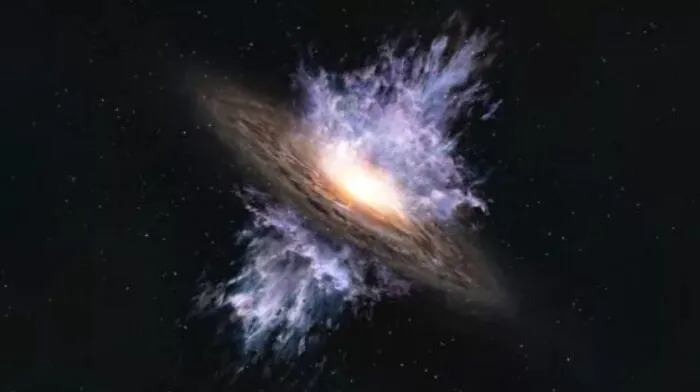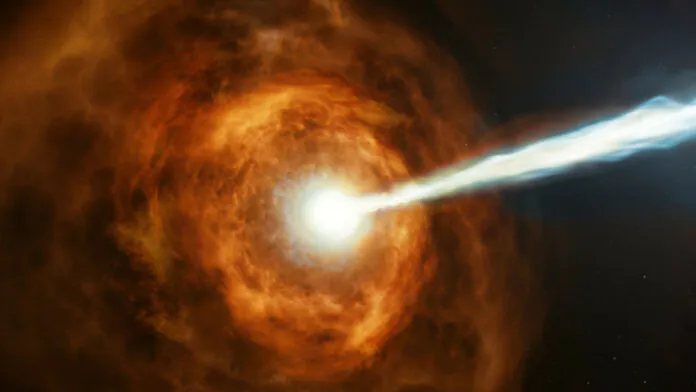© ROOT-NATION.com - Use of content is permitted with a backlink.
During the first billion years of the universe’s existence, winds blowing from supermassive black holes in the centers of galaxies were much more frequent and powerful than those observed in modern galaxies, about 13 billion years later. Such winds were so strong that they slowed the growth of the supermassive black holes from which they emerged. These are the results of a study led by three scientists from the Italian National Institute of Astrophysics (INAF) in Trieste, recently published in the Nature journal.
The work is based on observations of 30 quasars from the Very Large Telescope (VLT) at the ESO Paranal Observatory in Chile. Quasars are extremely bright spot sources in the nuclei of distant galaxies, the radiation of which occurs due to the intense activity of central supermassive black holes that absorb surrounding matter. The host galaxies of these quasars were observed during space dawn when the age of the universe ranged from 500 million to 1 billion years.
“For the first time, we measured the fraction of quasars in the young universe exhibiting black hole winds,” says Manuela Bischetti, INAF researcher in Trieste and first author of the new study. “Unlike what we observe in the universe closer to us, we discovered that black hole winds in the young universe are very frequent, have high speeds up to 17 percent of the speed of light, and inject large amounts of energy into their host galaxy.”

About half of the quasars examined in this study show black hole winds, which are much more frequent and 20 times stronger than those known in the quasars of the more nearby cosmos when the universe was around 4 billion years old.
“Observations of black holes in the young universe show that they grow much faster than their host galaxies, whereas in the local universe, we know that black holes and galaxies co-evolve,” adds co-author Chiara Feruglio, INAF researcher in Trieste. “This implies that a mechanism must have acted at some point in the universe, slowing down black hole growth. Our observations enabled us to identify this mechanism in the black hole winds produced when the universe was 0.5 to 1 billion years old.”
Thus, the energy released by the winds could stop further accretion of matter to the black hole, slow its growth and begin a phase of “general evolution” between the black hole and the galaxy that receives it. “This study allowed us to identify the epoch in the history of the universe during which the impact of black hole winds started being significant,” adds Bischetti. “This has a huge impact on our knowledge of the initial phases of growth of black holes and their host galaxies, setting strong constraints on the models that describe the formation of the first galaxies.”
A completely unexpected discovery was made possible by the high-quality data of the Xshooter tool installed on the VLT as part of a large ESO program that includes about 250 hours of observations.
You can also help Ukraine fight with Russian occupants via Savelife or via an official page of the National Bank of Ukraine.
Read also:
- Curiosity photographed the «entrance» in the Martian rock
- Water on Mars existed much longer — evidence proves


